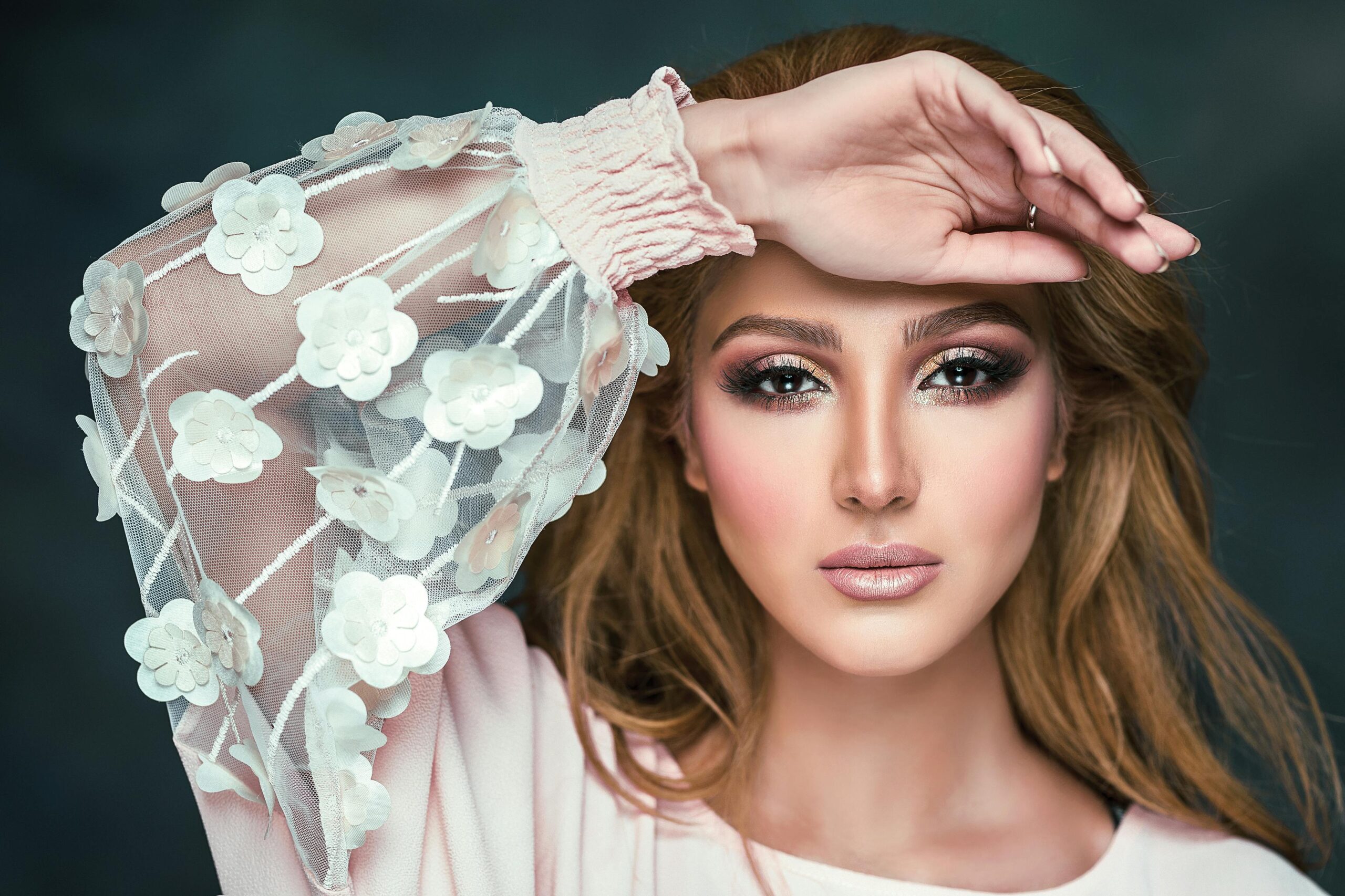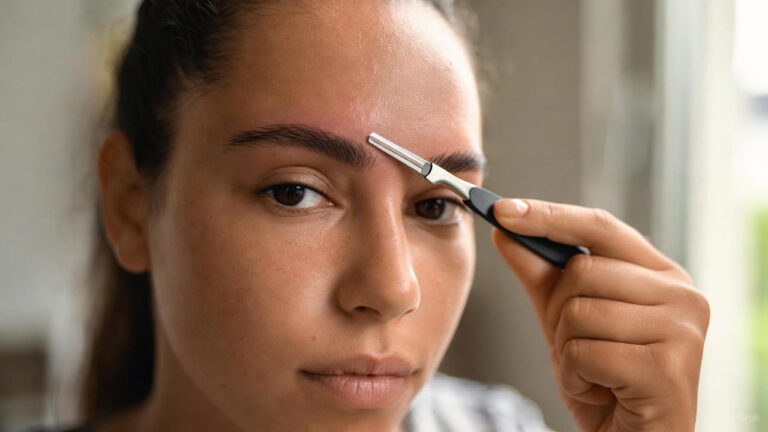Dealing with skin concerns like redness, dark circles, or hyperpigmentation can make achieving a smooth complexion challenging. This is where color-correcting makeup comes in. Instead of layering on heavy foundation, color-correcting products target specific issues, neutralizing discoloration and creating a balanced base for your makeup. In this article, we’ll explore the benefits of using color-correcting makeup to address common skin concerns and how these products can simplify your beauty routine.
What Is Color-Correcting Makeup?
Color-correcting makeup involves using products like primers, concealers, and powders with a specific tint that neutralizes unwanted tones in your skin. Based on the principle of the color wheel, opposite colors cancel each other out. For example, green neutralizes redness, while peach tones combat dark circles. This technique helps you achieve a more even complexion without the need for thick layers of foundation.
Benefits of Color-Correcting Makeup
1. Neutralizes Skin Discoloration
Color-correcting makeup effectively neutralizes various types of skin discoloration. If you struggle with redness due to rosacea or blemishes, a green-tinted corrector can neutralize that redness. For those with dark circles or hyperpigmentation, peach or orange correctors brighten the area by counteracting the blue or purple tones. This targeted approach gives you a balanced, natural look.
2. Reduces the Need for Heavy Foundation
One of the biggest advantages of color-correcting makeup is that it reduces the need for thick layers of foundation. By addressing the problem at its root, you can apply less product to achieve the same flawless finish. This not only makes your makeup look more natural but also feels lighter on the skin, allowing your complexion to breathe.
3. Customizable Solutions for Every Skin Tone
Color-correcting products are versatile and can be used by individuals with varying skin tones. From fair to deep complexions, there are correctors in shades that work across the spectrum. It’s important to choose the right color for your skin’s undertones to ensure the best results. This versatility makes color correction suitable for almost anyone dealing with uneven skin tones.
4. Targets Multiple Skin Concerns
Whether you’re dealing with acne scars, dullness, dark spots, or under-eye circles, color-correcting makeup can help. Different shades are designed to tackle specific concerns, so you can use multiple correctors to target multiple areas. For example, a purple corrector brightens dull, sallow skin, while a yellow one neutralizes purple or bluish undertones. This makes it an all-in-one solution for a variety of skin issues.
5. Easy to Apply
Color-correcting makeup doesn’t require expert-level makeup skills. Most correctors come in creams, liquids, or stick formulas that are easy to blend into your skin. You simply dab the corrector onto the area that needs neutralizing, blend it out with a sponge or brush, and apply your foundation on top. The simplicity of this process makes it accessible even for makeup beginners.
6. Prevents Makeup from Looking Cakey
When you pile on foundation or concealer to hide imperfections, it can sometimes leave your makeup looking cakey or heavy. Using a color corrector eliminates the need for multiple layers of makeup, ensuring your foundation applies smoothly and looks natural. This helps maintain a fresh, lightweight appearance all day long.
7. Prolongs the Wear of Your Makeup
Because color-correcting makeup creates an even, neutral base, it allows your foundation and other products to sit better on the skin. This can help your makeup last longer throughout the day, as it reduces the need for touch-ups. By creating a flawless base, your makeup is less likely to fade or break apart in areas where you experience discoloration.
How to Choose the Right Color Corrector
Choosing the correct shade is essential for effective color correction. Here’s a quick guide to help:
- Green: Best for neutralizing redness from rosacea, acne, or sunburn.
- Peach/Orange: Ideal for covering dark circles and hyperpigmentation, especially on medium to deep skin tones.
- Purple: Helps to brighten dull, yellowish complexions.
- Yellow: Great for neutralizing purple or blue undertones, such as veins or dark circles on lighter skin tones.
When selecting a product, it’s crucial to match the corrector to your skin concern and undertone for the most effective results.
How to Apply Color-Correcting Makeup
- Step 1: Start with a clean, moisturized face. Apply your regular primer if needed.
- Step 2: Use a small amount of the corrector on areas that need neutralizing. Dab it on gently rather than rubbing.
- Step 3: Blend the product using a makeup sponge or brush, ensuring the edges are seamless.
- Step 4: Apply your foundation on top, blending evenly to avoid disturbing the corrector.
- Step 5: Set your makeup with a light dusting of translucent powder to ensure long-lasting wear.
It’s essential to use the right amount of corrector—too much can interfere with the foundation, while too little may not effectively cover the discoloration.
Conclusion
Color-correcting makeup is a powerful tool for anyone looking to address specific skin concerns, such as redness, dark circles, or uneven tone. By neutralizing discoloration at the source, color correctors allow you to use less foundation while achieving a more natural finish. Whether you’re a makeup beginner or a seasoned pro, incorporating color-correcting products into your routine can simplify the process of achieving a flawless complexion.
FAQs
1. What is color-correcting makeup used for?
Color-correcting makeup is used to neutralize specific skin concerns like redness, dark spots, and uneven skin tone. It targets the root of discoloration, helping create a more balanced complexion.
2. Can I use multiple color correctors at once?
Yes, you can use multiple color correctors at once. For example, you can apply a green corrector for redness and a peach corrector for dark circles. Just ensure you blend them well before applying foundation.
3. Do I need color-correcting makeup if I already use concealer?
Concealer and color correctors serve different purposes. While concealers cover imperfections, color-correcting makeup neutralizes them, making it easier to apply less product and achieve better coverage.
4. Will color-correcting makeup make my skin look unnatural?
No, when applied correctly, color-correcting makeup enhances your natural look by addressing discoloration. The key is to blend well and use a thin layer of foundation over the corrector for a seamless finish.
5. How often should I use color correctors?
Color correctors can be used as often as needed, depending on your skin concerns. Some people use them daily, while others may only use them for special occasions when they want a flawless base.
6. Can men use color-correcting makeup?
Yes, color-correcting makeup can be used by anyone, regardless of gender. It is particularly helpful for anyone dealing with visible skin concerns, such as redness, acne scars, or dark circles.



